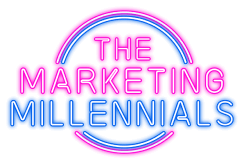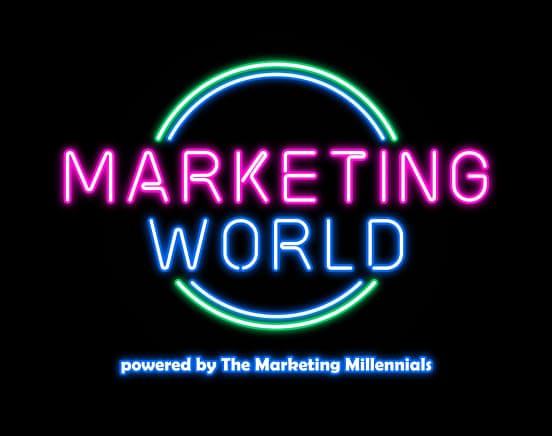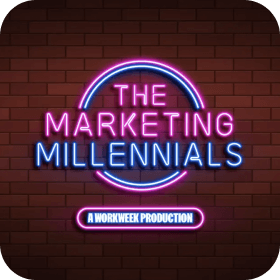Today’s guest is a special one, and no it’s not just because he hosting a live podcast at Marketingland on October 18th. #shamelessplug #getyourticketnow #okimdone LOL.
Marketing Bestie, meet Nik Sharma, the DTC guy.
The CEO of Sharma Brands, one of AdWeek’s Young & Influential, and Forbes 30 Under 30, Nik is an advisor to some of the fastest-growing brands in commerce.
Lucky for you and I, Nik shared 5 of his biggest tips to build your dream landing page with us on The Marketing Millennials Podcast. Here’s what he had to say in his own liiiiightly edited words.
1. Landing Pages vs. Homepages:
“Landing pages are web experiences that you build to answer the questions of what it is you’re selling, why it exists, and how it’s going to make a consumer’s life better.
Within that you can incorporate different elements of how your product compares to another brand or where your material is sourced from.
With that, you’re able to create a cohesive experience on your website where now you have a single page that talks about everything from start to finish. You’re not forcing consumers to jump around different pages on your site, but rather everything is right in front of them.
The way you should approach building your landing page is by thinking of yourself as an A-list celebrity assistant at a red carpet, and Kim Kardashian is your website visitor. You have to make sure that everything is right there at the right time, waiting to be read and consumed.
You can’t have Kim coming to you and asking, wait, what is this, what’s the price, or what comes in the box? The purpose of your landing page is to answer all these questions in one shot (LOVEEE this analogy).
At the same time, you might be targeting a variety of different audiences and you might have different messaging to each audience on each landing page. Whereas, your homepage or main website is very focused on one type of consumer.
Landing pages are a cohesive way to educate and inspire a purchase within a consumer versus just driving them to the homepage and forcing them to figure out what they want to do.
2. How to Build a Landing Page that Fits Consumer Personas:
Go straight to the reviews. Let’s say you have 10, 100, maybe 10,000 reviews.
Now start looking at the reviews, somebody likes the design of the product, boom write down design. The next one, someone says the product is reliable, write that down. Third, the person was happy with the price, write that down.
By the time you get done going through your reviews, you’ll have a pretty clear idea of what it is that people actually care about from using your product.
So then I flip it on its head.
Take the top five things people care about most and focus on them, because the data shows you this is what people care for. Then start crafting the page.
Level up your marketing game
Zero BS. Just fun, unfiltered, industry insights with the game-changers behind some of the coolest companies from around the globe.
No spam. Unsubscribe any time.
Hit on the first two or three things consumers enjoyed about your product at the very top, then slowly spread the other hot button topics as you go down the page.
You also want to make sure that you’re not just pushing information, you want to be able to show proof that it’s not just you saying how great your brand is. That’s where social proof and UGC come into play.
You can even add a brag bar, which is quotes from publications or customers themselves.
Fuse what it is that you’re selling, why you’re selling it, and add social proof to balance out (this is a recipe that I will be stealing immediately).
3. Must-Have Elements of Every Landing page:
Start with a really good hero section, whether that’s a video or a great image, you want to make sure that the hero properly communicates the function of the product.
(Let me reiterate that, the hero should properly communicate the function of the product.)
You also want to have a very strong piece of copy at the top. People don’t care about what your product is, they care about what it does for them.
So flip your copy to something that clearly shows consumers what your product will help them with.
What that does is force consumers to realize, oh I get something out of this (and their likelihood to buy skyrockets).
Then in the hero section add social proof around how many five star reviews you have, accreditations, and badges.
The last thing to add is any kind of pricing. People like to know what they’re getting into if they’re going down a page and pricing helps them understand right away if something is for them or not.
After the hero, we like to put something called the why section.
This was something I discovered a few years ago when I was trying to think how to communicate why a product is so good.
So I just tested writing in plain English, why the product is good and how it helps the consumer.
It turns out this was a huge unlock in the world of landing pages because we weren’t trying to be cryptic about what exactly the product does to help consumers. We wrote it as if we were speaking to a fifth grader. (Are you smarter than a 5th grader was one of my all-time fav shows btw – LOL.)
4. Push vs. Pull Sections:
There are two types of sections on landing pages. The first being pull sections where you try to get consumers to do something. Urging consumers to scroll down, click a product variant selector, or click a CTA.
The second are push sections. With a push section you are trying to educate the consumer to help them make a better decision.
The hero section is more of a push section because you’re trying to tell consumers what your product is.
Then the why section is a pull section, you’re telling consumers why they should buy your product.
Then balance it again with a push section of a brag bar, whether it’s a press quote if you’re targeting an older demo or a customer testimonial for a younger demo.
Usually from there it can start free flowing. Communicate and let customers know that their dollars are working towards something other than just capitalism (boom).
5. The Power of Personalization:
A lot of people just have one landing page for every channel and they’re wondering why one channel is converting better than another.
In reality they need to be testing landing pages on every single channel.
We’ve run some ads with tv and our landing pages were significantly different than our landing pages for Facebook, which were significantly different then when we aired on Good Morning America.
Every audience and channel needs to have a very specific site experience.
In modern day advertising, there’s so much competition for attention, you can’t have 8 out of 10 things right. (You need to have 10 out of 10 things right to win.)
6: Connecting Messaging Between an Ad and Landing Page:
As a consumer when we click an ad for a blue teddy bear and get to the landing page and its yellow dinosaurs, we’re like hold on, what? What happened to the blue teddy bear I just clicked?
So there’s a few ways to avoid this trap as a brand.
One is obviously—”
Hmm the podcast must’ve cut out, looks like you’ll have to come to Marketingland on October 18th to see Nik Sharma LIVE to hear the rest. 



